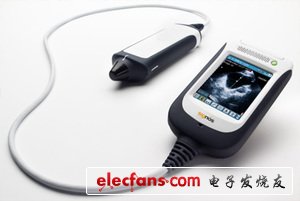Portable medical equipment includes electronic sphygmomanometers, electronic blood glucose meters, heart rate monitors, portable electrocardiographs and other physiological signal detection health care equipment. Other large-scale professional medical instruments such as ultrasound have also begun to "compress" in volume. With portable products, these bring great convenience for doctors and patients. "In the past, the patient went to the hospital for examination, but now the instrument takes the initiative to come to the patient for testing," Diao Guodong explained the change in the medical model.

Picture: With portable products, it brings great convenience to doctors and patients
Compared with consumer electronics, chips in medical equipment have higher technical thresholds and stricter safety regulations on voltage, current or static electricity protection. In addition, for traditional medical equipment, size and power consumption are not one of the design considerations, but for portable or wearable products, longer battery life and small circuit size are important keys. Increase Any additional functions must consider power consumption, circuit size, and must also have sufficient computing power. Even for some disposable chip products, the cost is extremely important.
These changes have brought great challenges to traditional medical equipment manufacturers, but have brought new business opportunities to semiconductor manufacturers. To meet these challenges, new semiconductor technologies are moving towards making medical devices smaller, lower power requirements, and cutting overall costs. The development of medical device chips presents four major trends: high integration, miniaturization, high energy efficiency, and standardization.
For example, ADI has launched a series of medical product solutions for such needs, such as an eight-channel ultrasonic receiver with a built-in JESD 204B serial interface on the chip. Through this interface, ADI ’s AD9671 eight-channel receiver can make an ultrasonic system The I / O data routing in is 80% less than other data interface standards. This not only simplifies the circuit board design in ultrasonic equipment, but also meets the industry's needs for higher data rates, more channels, and greater image resolution. In response to manufacturers, designing compact, high-performance ultrasonic systems need.
2x4 Troffer Lights delivers intense, high quality illumination while using less energy than traditional fluorescent troffers.Beautiful 2X4 Led Troffer is possible in any commercial environment with recessed fluorescent troffer lights.LED Troffers are the perfect kind of indoor lighting to spike the moods of, well, anyone in offices, schools, retail, and hospitals. Bbier is Troffer Light manufacturer which offers a variety of wattages, kelvin color temperature, and lens styles so it's easy to buy LED flat panels and troffers lights that best fit your lighting application.LED recessed 2X4 Light Fixture is a perfect lighting solutions for indoor applications like office lighting, classrooms, showrooms, lobbies, reception areas, hospitals.
2X4 Troffer Lights
2X4 Led Troffer,2X4 Light Fixture,2X4 Troffer,2X4 Led Lay In Fixtures
Shenzhen Bbier Lighting Co., Ltd , https://www.chinabbier.com
